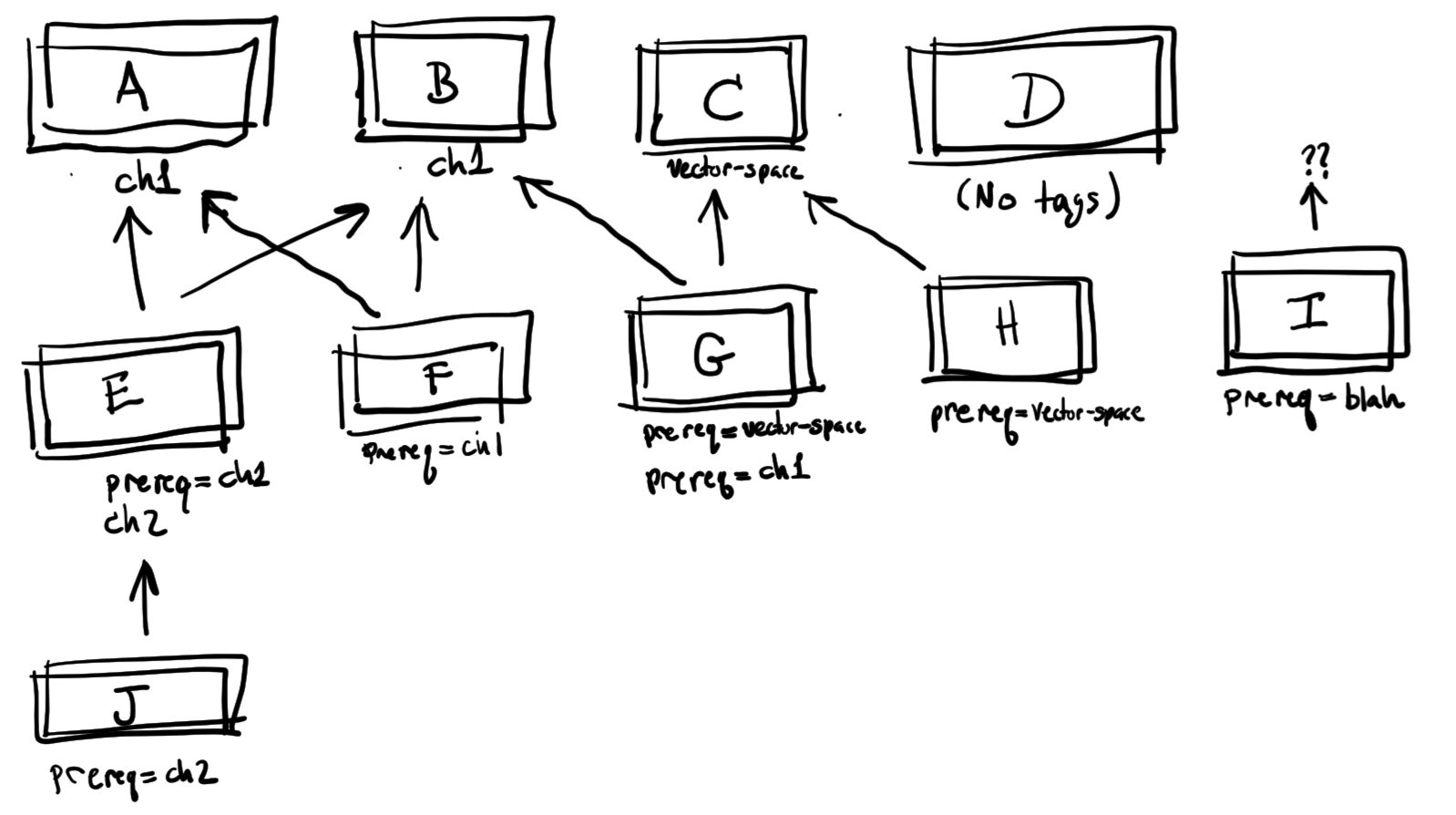Well a graph is usually just represented as an adjacency list, and in most languages it actually makes more sense to have it be a mapping. And your tag dictionary may not be necessary. You can just use a thin, typed wrapper around col.find_notes(). Also probably better to use a List rather than a queue for your card queue, since you might need inserts. Not sure I understand the algorithm well enough to be sure about that. I'll have to think about it some more.
So you might have the following for type signatures:
- Note graph:
g: Dict[Guid, Set[Guid]] - Prerequisite dictionary:
deps: Dict[Tag, Set[Guid]] - Card queue:
q: List[CardId].
Here we define type aliases Guid = str and CardId = int.
Problem Statement
We need to determine the order that each card is introduced based on the prerequisite dependencies listed in tags combined with either the creation time or the new card order.
We need a strict total order to sort the cards. The prerequisites induce a strict partial order on the notes. If card
Ais a prerequisite of cardB, thenAandBare comparable and we could sayA<B(meaningAmust be introduced beforeB). Additionally, the new card order provides a strict total order on Anki cards where (by default), for every pair of cardsAandB, ifAwas created beforeB, thenA<B.The question is how to create a new strict total order that
The graph of prerequisites between notes consists of one or more multitrees.
Example Prerequisite Graph
The following image shows an example of how cards can be related to each other via prerequisites. The tags for each card are listed below it.
For this example, the strict partial order on the cards is as follows,
A<E,F, andJB<E,F,J, andGC<G, andHDis not comparableE<JIis not comparable and has a prerequisite that cannot be satisfied.For each card that does not have a card less than it, we say that it is a minimal card. Thus, for this example,
A,B,C,D,E, andIare minimal cards.(Possible) Sorting Algorithm
In a previous comment, I described the following process, so I'm going to copy it here for future reference